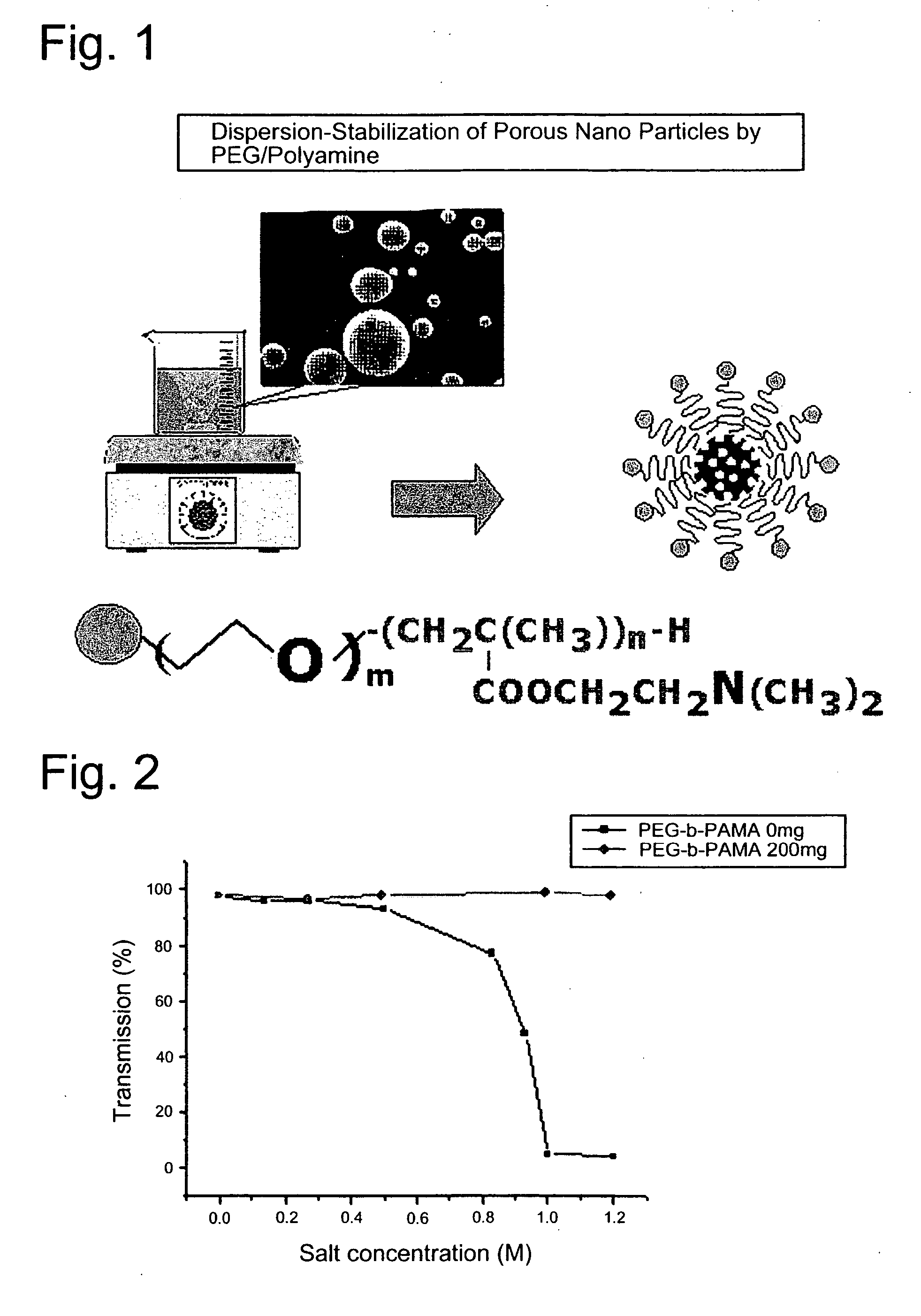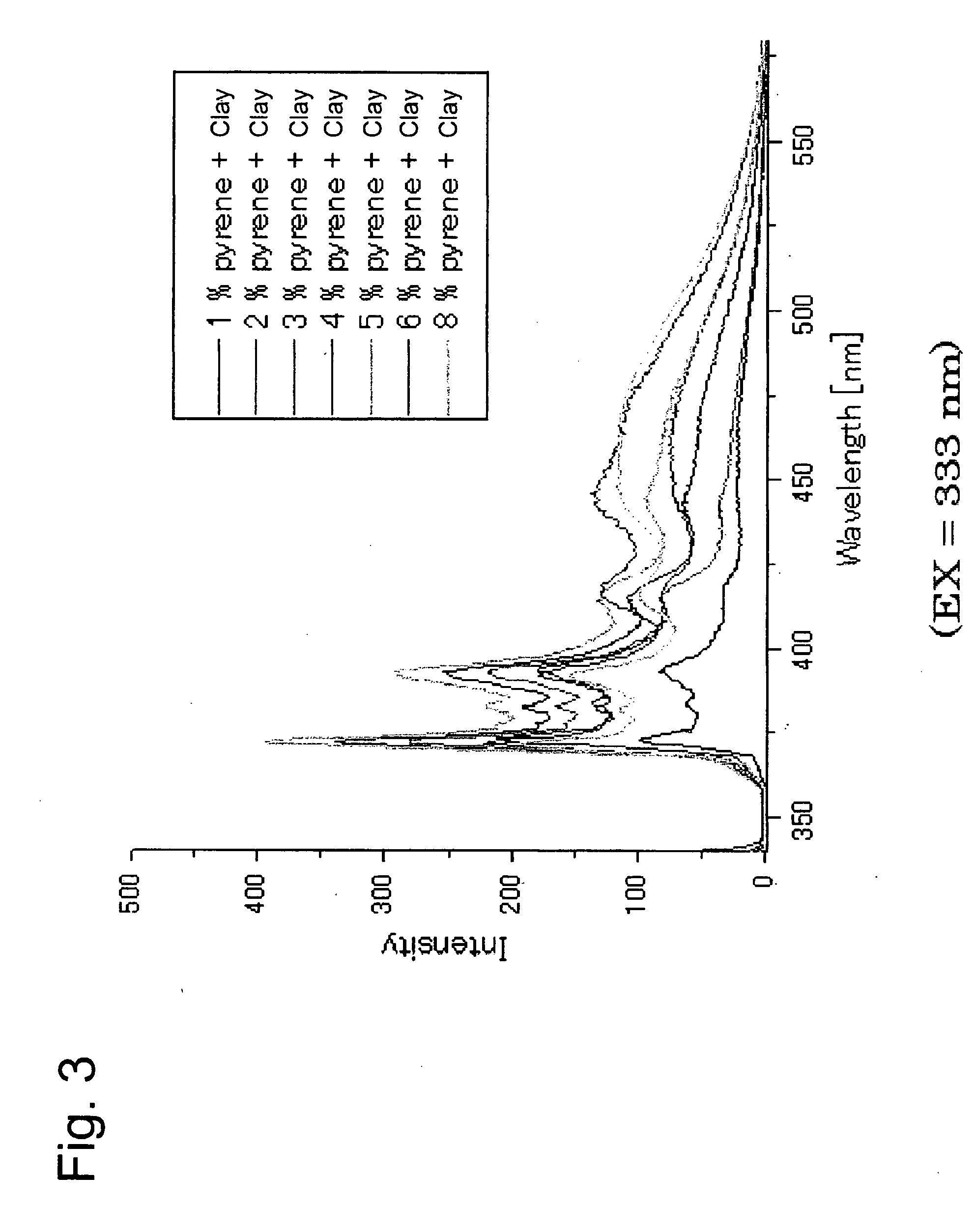Conjugate of fine porous particles with polymer molecules and the utilization thereof
a technology of polymer molecules and fine porous particles, which is applied in the direction of biocide, microcapsules, capsule delivery, etc., can solve the problems of poor dispersion stability of most of the aforementioned conventional particles in aqueous fluid
- Summary
- Abstract
- Description
- Claims
- Application Information
AI Technical Summary
Benefits of technology
Problems solved by technology
Method used
Image
Examples
example 1
How to Produce Silica Particles Conjugate
[0066] Polymer which is used in this Example 1 (abbreviated as PEG / PAMA; having the following formula)
[0067] PEG (Mn=4,000 g / mol) and PAMA (polymethacrylic acid (2-N,N-dimethylaminoethyl); Mn=2,000) which had been obtained by the method as given in the above-mentioned Y. Nagasaki et al, Macromol. Chem. Rapid Commun. 1997, 18, 927 were used as a dispersion stabilizer, with which silica particles were modified.
[0068] To 150 μL of a colloidal silica solution (manufactured by Nissan Chemical Industries Co., Ltd.; Snowtex S® (colloidal silica); particle size: 17 nm) (containing 41.5 mg of silica particles) which had passed through a filter, 9.85 ml of phosphate buffer (pH=7.4) was added, so that the total amount might be 10 ml. To the resultant mixture, ultrasonic wave was applied for 30 minutes, and, then, a solution of 200 mg of PEG / PAMA block polymer (4000 / 2000) dissolved in 10 ml of phosphate buffer was added. The change of transmission wa...
example 2
How to Produce a Conjugate of Clay Particles with PEG / PAMA
[0071] Conjugate was prepared by the same method as in Example 1 except that silica was replaced with clay particles (Laporte Industries LTD; Laponite XLG-(F) 5 mg). The stability of thus prepared conjugate was evaluated by changing ionic intensity. Clay-PEG / PAMA composite particles had excellent dispersion stability as in silica. From DLS measurement, particle size was found to be 140 nm.
example 3
How Griseofulvin is Supported on a Silica-PEG / PAMA Conjugate
[0072] In this Example 3, the conjugate as prepared in Example 1 was made to support griseofulvin as an antifungal agent. In acetone, 5 mg of griseofulvin (GF) was dissolved, and the resultant solution was added to a phosphate buffer solution which contained silica particles (40 mg), so that GF might be incorporated with silica particles. Subsequently, 200 mg of PEG / PAMA was added, and the resulting mixture was stirred to give a conjugate. As a result of fluorescence measurement, it was confirmed that 3% of GF had been incorporated in the conjugate.
PUM
| Property | Measurement | Unit |
|---|---|---|
| diameter | aaaaa | aaaaa |
| particle size | aaaaa | aaaaa |
| diameter | aaaaa | aaaaa |
Abstract
Description
Claims
Application Information
 Login to View More
Login to View More - R&D
- Intellectual Property
- Life Sciences
- Materials
- Tech Scout
- Unparalleled Data Quality
- Higher Quality Content
- 60% Fewer Hallucinations
Browse by: Latest US Patents, China's latest patents, Technical Efficacy Thesaurus, Application Domain, Technology Topic, Popular Technical Reports.
© 2025 PatSnap. All rights reserved.Legal|Privacy policy|Modern Slavery Act Transparency Statement|Sitemap|About US| Contact US: help@patsnap.com



